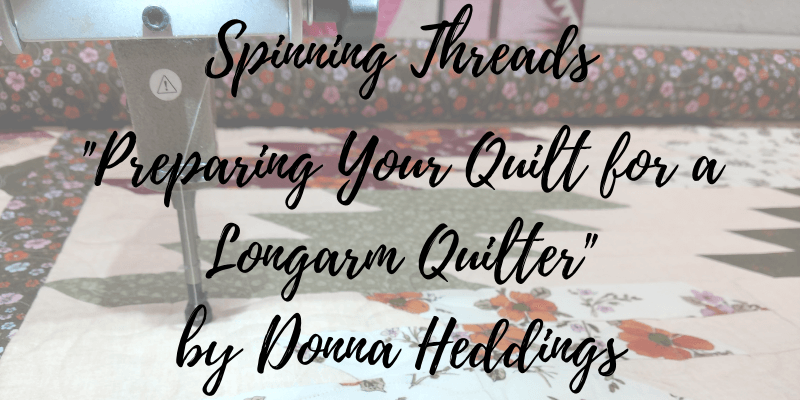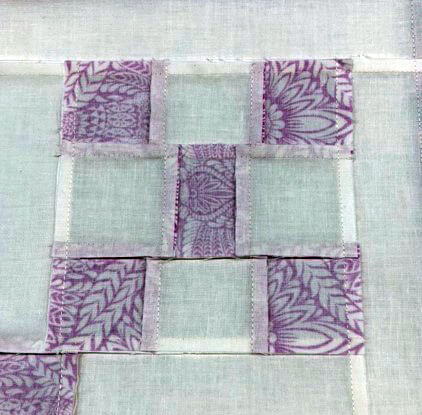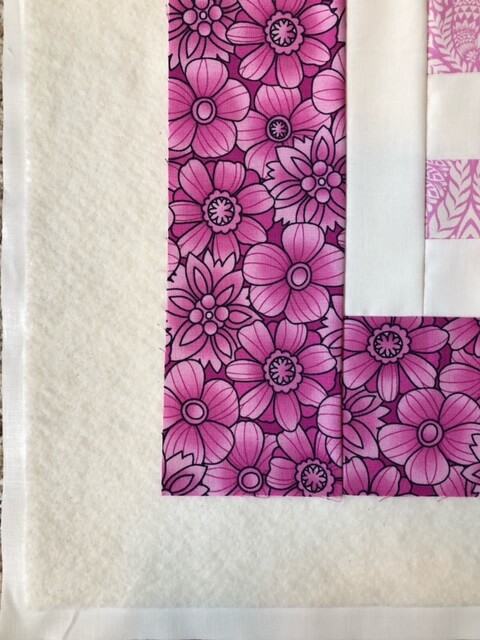Things to think about as you make your quilt top.
Fabric
- Using high-quality fabric will help your quilt last longer and quilt up with few issues. Low-quality fabric may have a very loose weave or thinner look. If you want your quilt to last for many years, use the highest quality fabric you can afford.
Seams
- Your quilt top seams should be neatly pressed flat—open or to one side. If you want your quilter to do any stitch-in-the-ditch, your seams will need to be pressed to one side.
- Most quilts have one-quarter-inch seam allowances. Accurate seams should result in a flat, square quilt top. If your quilt pattern includes small pieces, using starch on the fabric before cutting them out helps with accuracy.
- Trim any stray or long threads on the back of your quilt top. Dark threads may show through on lighter fabrics on the quilt top.
- Check for any open seams or pins.
Borders
- Borders that are flat and without waves will help your quilt remain square after quilting. Waves are excess fabric that can also cause puckers or pleats during quilting. You can create a traditional border using the following method to help avoid waves.
- When making your borders, measure the top, the center, and the bottom of the quilt. Cut your borders the average of these three measurements. Do the same for the length of the top, cutting those borders the average of those three measurements.
Batting
- Many longarm quilters have a selection of batting available for you to purchase. We are very fortunate that a variety of different batting materials and lofts are available today. Let your quilter know what batting you prefer, or ask for their recommendation based on your individual quilt.
- If you are providing batting to the longarm quilter, it should be at least four inches wider than the quilt top on all sides. The extra is needed to allow for draw-up during quilting and for tension testing.
Backing
- When preparing your backing for your longarm quilter, it should be at least four inches wider than the top on all sides. If your quilt top is 50” x 70,” your backing should be at least 58” x 78.” Some quilters may need more, so check with them ahead of time. The amount of extra fabric needed on each side varies from two to four inches and is dependant on which longarm frame your quilter is using.
- If you are piecing your backing, cut off the selvages first and use a one-half-inch seam allowance.
- If your backing fabric is similar in color to your quilt top, using the same color thread in the top and the bobbin helps eliminate the possibility of one color thread coming through to the other side.
- If your backing fabric is stiff, you may want to prewash it to remove chemicals from the manufacturing process. If you prewash, keep in mind that it will likely shrink, so purchase enough to allow for this.
- The backing must be squared up. The top and bottom of the backing will need to have straight edges so your quilter can load the backing on their frame. If it is not cut or ripped straight, your quilter may charge an additional fee for measuring and trimming the backing.
- The backing should be pressed before you give it to your quilter. Backing that is not pressed may have creases that could cause wrinkles or puckering on the back of your quilt. Some quilters may charge extra for pressing services.
Extra Services
Longarm quilters often offer extra services. These may include but are not limited to pressing, repairing seams, seaming backs, squaring, trimming the quilt, binding, and label making. Ask your quilter if you are interested in these or any other services and what fees are associated with them.
“A neatly prepared and square quilt top and backing will help you achieve great longarm quilting results! Quilt fabrics and backing fabrics are not all the same. Quilting results may vary somewhat due to the weave of the fabrics and other factors. But for the best results, following the above tips will make a big difference in your finished quilt! Happy Quilting!” ~Donna Heddings, The Quilted Owl Longarm Quilting Services
Unless otherwise noted, photos are courtesy of Donna Heddings.





